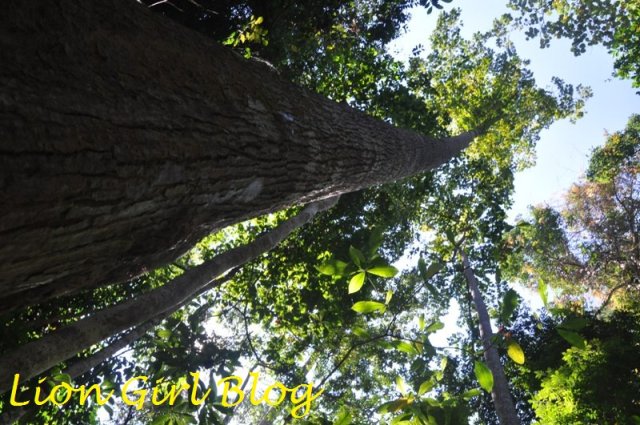
Malaysia's Belum-Temengor rainforest is a place of amazing natural wonders. More than 130 million years old, this 300,000 hectare forest is home to a vast number of species of animals and plants, many of which cannot be found anywhere else in the world.
This pristine forest remains one of the largest untouched forest reserves in Peninsular Malaysia. It is home to 14 threatened species and may lead to the discovery of more new species.
Belum-Temengor is in the state of Perak, at the border of Peninsular Malaysia and Thailand. Its stunning landscape houses more than 3000 species of flowering plants, including three species of the largest flower in the world ― the Rafflesia.
It is also the natural habitat of 64 species of ferns and 62 species of mosses. It has a lake that is home to 23 species of freshwater fish and five species of turtles.
The entire forest complex is about four times the size of Singapore, which makes it an ideal place for large animals such as Malayan tigers, Asian elephants and Sumatran rhinoceroses.
Other animals also living there include seladang (or Malayan Gaur, a species of wild cattle), wild boars and several species of deer, pythons and cobras. Belum Temengor more than 300 bird species, including the hornbill. It is the only existing forest where you can spot all 10 species of hornbill that inhabit Malaysia.
The Belum-Temengor, the largest continuous forest in Peninsula Malaysia, is prime habitat for tigers. The Malayan tiger is a rare sub-species of tiger that are only found on the Malay Peninsula and on the southern tip of Thailand.
Until 2004, the Malayan tiger was considered the same as the Indochinese Tiger, but DNA testing showed it was a separate sub-species of tiger. There are estimated to be only about 500 of this tiger subspecies still left in the wild. There are five other surviving subspecies of tiger, with only about 3200 wild tigers remaining in the entire world.
But this tropical paradise is under considerable threat from forest logging and other human activities causing habitat loss and fragmentation. With the recent building of the East-West Highway, which gives more access for timber extraction and poaching from the jungle, new towns and industrial centres have also developed in the region.
There are also plans to convert parts of the tropical rainforest into plantation forests along the route of the East-West Highway.
A recent study carried out by WWF-Malaysia’s tiger conservation program estimated there were only 50 Malayan tigers left in the Belum-Temengor forest. A lead scientist and tiger expert said a minimum viable population is at least 80 to guarantee maintenance of the species in the region.
Dr Mark Rayan Darmaraj said: “This is why we have to secure the forests around the Belum-Temengor forest complex, by preventing further fragmentation to ensure there is enough space to support 80 tigers.”
The study also found evidence of poaching activities within the park, which poses a further direct danger for tigers and an indirect threat if the species on which tigers prey are also poached.
The WWF study indicates that tiger numbers in the forest are less than previously believed, which suggests that there could be between only 300-400 Malayan tigers left in the wild.
The Belum-Temengor forest is one of the last refuges for several other rare species, including the Malayan tapir, seladang, Malayan sunbear, Sunda pandolin and white-handed gibbon.
Stopping the deforestation of the Belum-Temengor rainforest habitat helps towards saving such threatened species from extinction. Without intact, unfragmented areas of rainforest habitat, these wild animals’ populations will continue to decline.
Some parts of the Belum-Temengor rainforest complex are protected, but other sections are not. Environmental groups, such as the Malaysian Nature Society (MNS) and Wildlife Fund for Nature (WWF), have proposed the preservation of the entire Belum-Temengor rainforest complex.
So far, Royal Belum, which covers 117,500 hectares, is protected as a state park. Conservation groups are campaigning to extend this to include Temengor Forest Reserve, parts of which are being heavily logged. This deforestation results in loss of habitat, habitat fragmentation and destruction of wildlife corridors used by wild animals.
Dr Loh Chi Leong from MNS said many endangered animals migrate freely across reserve borders, adding that logging could cut their access to their feeding or nesting grounds.
As an example, Loh said the vulnerable plain-pouch hornbill tends to roost in Temengor forest but feeds in the Belum forest area. So to achieve the long-term survival of the hornbill, it is necessary to protect adjoining forest areas as well as Royal Belum.
You can be part of the campaign to help to save the natural treasure that is Belum-Temengor. You can write to the Malaysian government or its embassies to express your concerns and urge Malaysia stop forest logging in the area and protect the Belum-Temengor rainforest.
Write to: Dr Lian Kok Fei, Ministry of Natural Resources and Environment, Level 6, Wisma Sumber Asli, No.25, Persiaran Perdana, Precint 4, Putrajaya- 62574, Malaysia. Email: drlian@nre.gov.my liankokfei@yahoo.com.my
